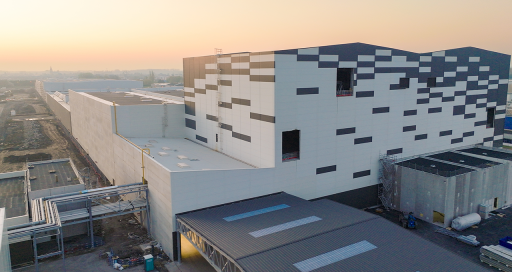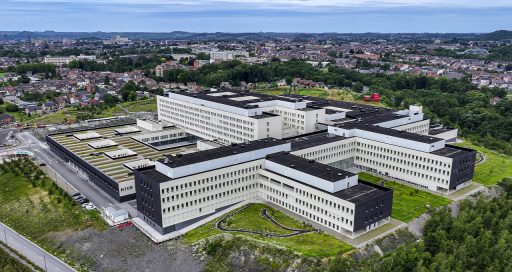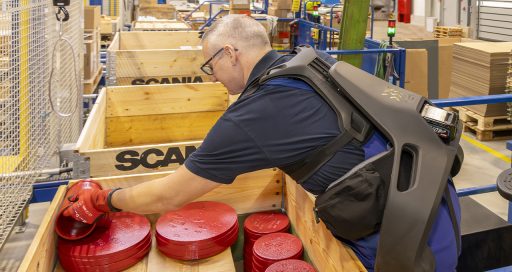The facility created by Automotive Cells Company in northern France to manufacture electric batteries for Stellantis and Mercedes‑Benz vehicles was fitted with a large-scale fire suppression system with help from Uxello, which had to overcome several challenges in the process.

The European Union has set a 2035 deadline for ending sales of combustion-engine vehicles and replacing them with electric vehicles. The three main objectives of this initiative are: reduced greenhouse gas emissions, energy autonomy, and improved air quality in urban environments.
Ecomobility is the new battleground for vehicle manufacturers, forcing them to reshape their industrial models. But the shift to electric remains dependent on the capacity of these major firms to produce batteries in sufficient quantities to meet demand.
“BIM and 3D modelling made it easier to coordinate the various parties involved”
Leading the race in France is Automotive Cells Company (ACC), a business jointly controlled by Stellantis, TotalEnergies and Mercedes-Benz that in May 2023, opened France’s first gigafactory, located between Douvrin and Billy Berclau near Lens. ACC expects an initial production capacity of 13 GWh. The first high-performance lithium-ion batteries left the factory at the beginning of 2024, and the target is to produce 500,000 units a year by 2030.
35,000 sprinkler heads
To ensure optimal safety in production, ACC drew on the expertise of Uxello Travaux Hauts de France, the VINCI Energies Building Solutions business unit specialising in fire risk management. “Construction of this gigafactory challenged us in more ways than one,” says business unit manager Nicolas Blumel. “One of the difficulties was the ultra-tight schedule. We had 15 months to do what under normal circumstances we would allow three years for.”
The sheer scale of the project was another challenge. In a gigafactory, everything takes on XXL dimensions. Fire protection for the Douvrin site required the installation of 35,000 sprinkler heads, 150 hose reels, 41 control stations and 130 km of pipework, and the construction of two 1,000 cubic-metre water reserves.
In addition, Uxello had to adapt the system to the specific chemical properties of the production process. Because batteries contain electrolytes, which can give off hydrogen and acid compounds on contact with water, the business unit opted for a foam spraying system.
3D modelling
The latest technologies were brought to bear on meeting these challenges. As Nicolas Blumel explains, “Right from the project design phase, BIM and 3D modelling allowed us to use a strictly standards-compliant representation incorporating all the technical information pertaining to the different batches. On a 74,000 sq. metre site, in an extremely busy environment with many trades working around each other, this makes it easier to coordinate the various parties involved.”
While ACC is leading the race to produce batteries in France, two more gigafactories are due to open soon in the same region. The Sino-Japanese group Envision AESC plans to supply Renault Electricity from a facility on the outskirts of Douai from early 2025. And this will likely be followed a few months later by the Grenoble-based startup Verkor’s facility in Dunkirk. Building on the expertise it brought to the ACC installation, Uxello stands ready to protect new gigafactories!
02/16/2024





